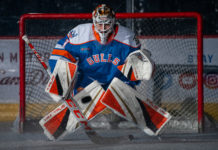We saw it, right?
We watched the Padres beat the hated/admired Dodgers three straight games before the All-Star break. We read how those road wins propelled the Friars into the Wild Card conversation and how the National League was beginning to wonder if the club was for real.
That all happened, right?
We didn’t imagine that…. did we?
We wonder because after the break the Padres have looked nothing like the team that confidently dispatched the Dodgers. Nothing at all. Swept by the Braves at home followed by lackluster three-game series in Miami, Chicago and New York.
From June 30 to July 25 (the day I wrote this column), the Padres won five games and lost 14, fell into last place in the NL West and out of serious contention for a Wild Card berth. The All-Star break felt like a springboard. It turned into an elevator shaft.
What are we watching?
A team that doesn’t know who it is.
A team that doesn’t know what it is.
And a team that doesn’t have any idea how to win when it counts.
This is what comes with a young team. Those Dodger victories look like a mirage, some cruel trick of the light and we feel like suckers believing the Friars were better than they are.
But the wins were real. They were a glimpse of our future…. a future where the Padres will roll in and beat the best teams in baseball with regularity.
But not yet.
At the All-Star break the Padres realized they were in the hunt. They also realized each game going forward had meaning. MLB beat writers were including the Padres among teams that might make a big trade to solidify a post-season push. The accolades brought pressure. As a rule (baseball is as full of written rules as it is psychological ones) pressure makes a young team tighten up, press more and chirp less. In May I wrote about the value of chirping (link: https://clairemonttimes.com/the-baseball-combination-that-matters/). Its value only increases deeper into the season.
When ballplayers talk about “grinding” through the season, they’re not kidding. It may look like a lark, but baseball is mentally exhausting. Keeping loose, relaxed and at ease with the grind of a baseball season is one of the most difficult challenges competitive teams face. For younger teams, the challenge is almost insurmountable. Baseball, as even the casual fan knows, is built around failure. Each game is comprised of hundreds of small actions and maneuvers (pitch location, infield shifts, stolen bases, relay throws, wild pitches, passed balls, opposite field hits, extra bases taken, foul balls, one-hop throws, line-drives caught, pop-ups missed) and games are won and lost at the thinnest margins of execution.
How young are the Padres? The team’s average of MLB years of experience is 4.1. Yes. That is the team average. For the pitching staff, the average is a paltry 2.9 years – 2.3 years if you eliminate 10-year veteran Craig Stammen. Our outfielders average 4.2 years of MLB experience. We are almost unimaginably young for a team hovering around .500.
For young teams, the pressure to win in July and August can look and feel completely different than it did in April or May. It may sound ludicrous, but the focus on winning becomes a burden and a distraction. The best teams know this. The best teams focus on baseball, not winning — on fouling balls off to extend an at bat; on taking an extra base because they have done their homework on outfield angles and the relative arm strength of the given outfielder; on pitching to contact instead of pitching for strikeouts.
As much as I hate to admit it, I have become a student of the Dodgers because the Padres will never make it to the World Series without dealing with LA. The Dodgers have been trying to perfect this baseball-first discipline for the past three years – building a roster this year that minimizes drama and focuses intensely but calmly on baseball. As of this writing, they are 30 (!) games over. 500.
The Padres are not built. The Padres are under construction. The Padres do not know what their future bullpen will be, only that the current bullpen has some serious holes. The Padres do not know who will play second base or catcher. It has only been within the last month that the club decided who would play center field. No team with a flimsy bullpen and uncertainty behind the plate, second base and center field can compete.
For two years, the Padres have been trying to figure out if Manuel Margot can play center field at the highest level. Margot is only 24 but it feels like he has been around and full of promise for years. His promise is real. His talent as an outfielder is well above average. At age 24, it looks as if he can now handle big league pitching and steal bases. These are all summer of ’19 discoveries and they have relegated Wil Myers to the unsustainable role of grotesquely over-paid pinch-hitter.
The Padres now appear willing to give Luis Urias a full-time shot at second base. Why Ian Kinsler remains on the roster mystifies me – nearly as much as why he was signed in the first place. Perhaps Kinsler will be stuffed like a pair of twice-darned socks into a late-July trade – the player to be forgotten later. Urias has tremendous fielding talent and deserves a shot to mature alongside shortstop Fernando Tatis Jr. and between veterans Eric Hosmer and Manny Machado. Hosmer might be on his way to becoming the J.T. Snow of our era – meaning the worst-hitting first baseman in the game – but he is the best of the available options and, like Myers, too costly to trade. Urias needs to know he belongs and he can only learn that by starting every day.
Lastly, the Padres need to identify a catcher. Together, Austin Hedges and Francisco Mejia have a batting average of .206 with 11 homeruns and 39 RBI. That is not playoff material. Hedges is 26 and Mejia is 23. For the remainder of this season, a platoon makes sense. Hedges is the better defensive catcher, but that does not make up for his perpetual offensive struggles. Mejia may be the best long-term project.
We cannot discuss the future without analyzing the Kirby Yates situation. Yates is the best reliever in the game and will remain under team control next year – meaning he is not a half-season rental. Yates (31 saves, 1.05 ERA and 42 percent strikeout rate) will command a huge price on the trade market. The Padres could land one and possibly two top-tier prospects and unload the unusable Myers (due a teeth-gnashing $22.5 million next year alone) in the process. That is the only scenario where dealing Yates would make any sense. But I’m not sure even that would be worth it.
Trading Yates would tear my heart out. He is an exceptional pitcher and the soul of our bullpen. I would hate to see him in the playoffs in another uniform. If next year is the year the Padres really compete, can we do it without Yates? Would trading him now torpedo clubhouse morale and plunge Friar Faithful into another summer of thrown-in-the-towel blues? I say keep Yates. Let him tutor recently promoted phenoms Adrian Morejon and Michel Baez. While that is happening, under-performing relievers (Logan Allen and Craig Stammen) can put up or pack up.
As I often tell young journalists, your career only looks strategic in retrospect. While you are living it, you have a goal but are moving here and there and making coin-flip decisions. Some work out. Some crash and burn. For the Padres, there is a strategy and management is happily assembling real talent with amazing upside. There will be ups and downs – times when the club looks unbeatable and times when it looks befuddled.
It is all real. It only looks like a mirage.
Major Garrett was born and raised in Clairemont, is Chief White House Correspondent for CBS News, host of “The Takeout” podcast and author of the book “Mr. Trump’s Wild Ride: The Thrills, Chills, Screams and Occasional Blackouts of His Extraordinary First Year in Office.”



